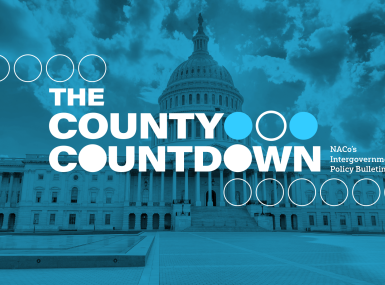EPA delays implementation of 2015 ozone rules
Upcoming Events
Related News

EPA will delay implementation of the 2015 National Ambient Air Quality Standards for ground-level ozone for one year
Environmental Protection Agency (EPA) Administrator Scott Pruitt announced June 6 that the agency plans to delay for one year the implementation of the 2015 National Ambient Air Quality Standards (NAAQS) for ground-level ozone. The ozone rule, which was finalized in 2015, would tighten the current ozone standard of 75 parts per billion (ppb), last set in 2008, to 70 ppb.
Learn More
Since December 2015, EPA has been working with states to determine which counties violate the 70 ppb standard. The agency was expected to make final nonattainment designations for the 2015 ozone standard by October. Barring legal challenges, the rule would have been implemented over the next several years. For example, even though the 75 ppb ozone standard was set in 2008, it’s only been fully implemented over the past two years.
However, Pruitt’s declaration will effectively halt implementation of the 70 ppb ozone standard for a year. This will allow the agency to review the criteria for the rule and give the states more time to develop air quality plans based on the new rule.
Ozone is one of the six air pollutants regulated by the Clean Air Act’s National Ambient Air Quality Standards (NAAQS) program. Under NAAQS, EPA is required to reassess air quality standards every five years. Primarily known as a summertime pollutant, ozone forms when sunlight reacts with pollutants such as volatile organic compounds emitted from chemical plants, gasoline pumps, oil-based paint, and auto body and print shops. Sources of nitrogen oxides (NOx) include power plants, industrial facilities and motor vehicles.
Under the Clean Air Act, states and counties serve as co-regulators with the federal government and are ultimately responsible for the implementation of new and existing air quality standards. A more stringent ozone standard could have a significant effect on counties nationwide. Currently, 227 counties, primarily urban and in the East, are regulated under ozone air quality standards. Under the new 70 ppb standard, the number of impacted counties is expected to increase to more than 350 counties.
Nonattainment designations have a significant impact on counties’ ability to update and improve their transportation systems and attract and retain businesses as they are required to impose tighter regulations on local businesses and other pollution sources in order to meet the standards.
NACo supports delaying the 2015 ozone NAAQS until after the 2008 NAAQS have been fully implemented and analyzed for impact.
Attachments
Related News

Senators introduce bipartisan UPGRADE Act to support small and rural public water systems
On December 15, Sens. Lisa Blunt Rochester (D-Del.) and Roger Wicker (R-Miss.) introduced the Unincorporated Partnerships for Grant Resources, Assistance, and Drinking Water Enhancements (UPGRADE) Act (S. 3465), a bipartisan bill that would strengthen federal support for small public water systems and helps unincorporated communities access clean and affordable water.

U.S. Department of Agriculture unveils $700 million for regenerative agriculture
On December 10, U.S. Secretary of Agriculture Brooke Rollins announced the launch of a $700 million pilot program to support regenerative agriculture practices across the country.

County Countdown – Dec. 1, 2025
Every other week, NACo's County Countdown reviews top federal policy advocacy items with an eye towards counties and the intergovernmental partnership.